Empowering Transfers to Connect Communities
Written by SAA for Construction Plus Asia 2023 June Issue
“With rare exceptions, every transit trip begins and ends with a walk.”
– Jeff Speck, author of ‘Walkable City’
Public transportation has a significant impact on urban spaces and the well-being of citizens, influencing the quality of life in cities. Darrin Nordahl in ‘My Kind of Transit’, likened public transportation to ‘a mobile form of public space’ that should be treated with respect and made pleasurable on account of its significant benefits to its users1.
As designers of the built environment, we constantly challenge ourselves to design great transit and urban spaces keeping people safe, happy and healthy, cognizant that 68% of the world’s population is projected to live in urban areas by 2050. After all, the health and well-being of citizens are the city’s most important asset and therein lies the opportunity for us to design good commuting journeys to empower communities.
The core of great transit design is creating effective, efficient and enjoyable transit experiences. This involves intermodal transfers providing seamless connections within the urban environment through a layering of different types of transport networks and mobility options, not just at transit stations but at various urban scales – at the level of the city, town, neighbourhood, community, to the last mile, creating a multitude of travel experiences.
All about transfers
The earliest transfers: Modes of travel in days past
The anatomy and quality of a transfer has changed drastically over the years. Singapore’s earliest forms of public transportation were rickshaws, ‘mosquito buses’, ‘pirate taxis’ or the slow and unreliable public bus service2. The early bus terminals and depots took the form of incidental roadside bus stops facilitating transfers.
The 1970s saw the change from terminal to interchange through the birth of Jurong Bus Interchange, the nation’s first. Since then, there has been significant improvement in the nation’s transit scene, from provision of infrastructure to the entire commuting experience.
Safe and seamless door-to-door journeys
Intermodal transfers today involve seamless journeys within the urban environment enabled through a of layering different types of transportation and mobility options to create diverse urban commute. The ease and speed of one’s ability to transfer makes the experience of commuting pleasurable, enjoyable and memorable.
A good transfer is therefore the sum of many parts – the directness of a journey, visual and sensorial delights along the journey, reduced commuting and waiting time, comfort, safety, an optimal balance of everything. As the entire door-to-door journey involves many connection points in between, a transfer breakdown at any point, at either the micro or macro level is likened to a breakdown in communication when brain cells stop sending synapses.
As such, it is critical that each transfer is carefully designed and considered within the entire ecosystem, starting with major transit connection points.
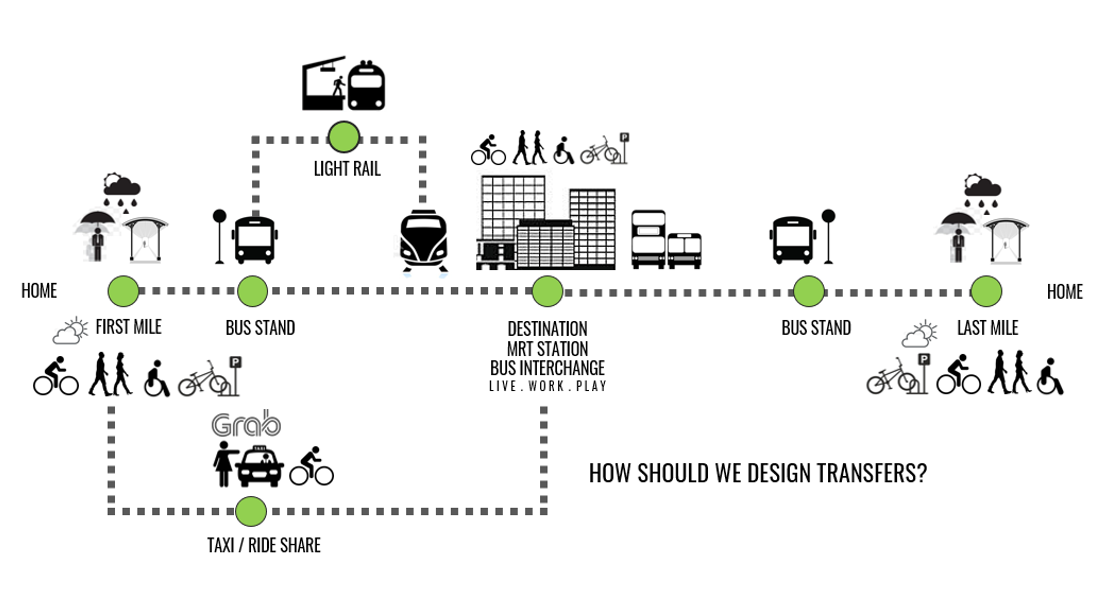
Connectivity within the station
Intuitive wayfinding through clarity of circulation
MRT stations are major transfer points for most commuters, therefore it is imperative for the route within the station leading to the train to be efficient and pleasant, especially during peak hours when passenger volumes are high.
Direct and open planning within the Stevens Interchange Station gives clarity to the station layout through a spatial and intuitive approach to wayfinding. Completed in 2022, the station is part of the Thomson-East Coast Line (TEL) and connects to the Down Town Line (DTL). The routes from entrances and interchange connections are designed to converge into a single, multi-level unifying open space, echoing the concept of an interior atrium within a retail mall which anchors the spaces around it, and helps people navigate the spaces within the interchange
High volume spaces and staggering voids that step back to create wider openings at higher floors maximise visual connectivity and promote intuitive wayfinding, enabling commuters to orientate themselves easily. Additionally, a pedestrian modelling simulation was utilised to ensure passage width requirements are met, while ensuring smooth circulation flow between the incoming and outgoing commuters. This is further reinforced by strategically located signages directing passengers to the right interchange connections and entrances. Integrated artworks by local artists under the public art programme, Art in Transit further anchor key spaces within stations such as the Newton Interchange Station, while providing a source of delight and familiarity for commuters.
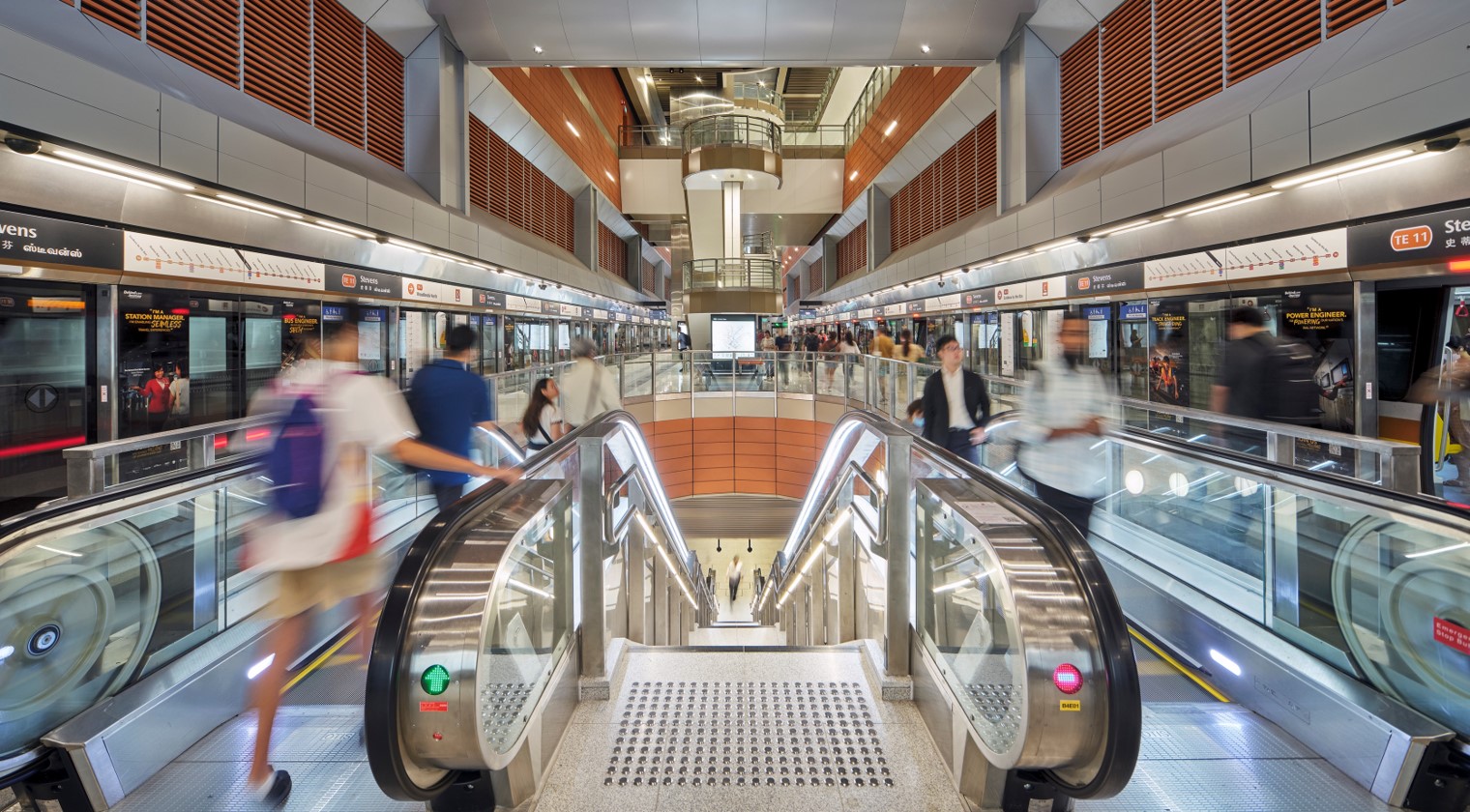
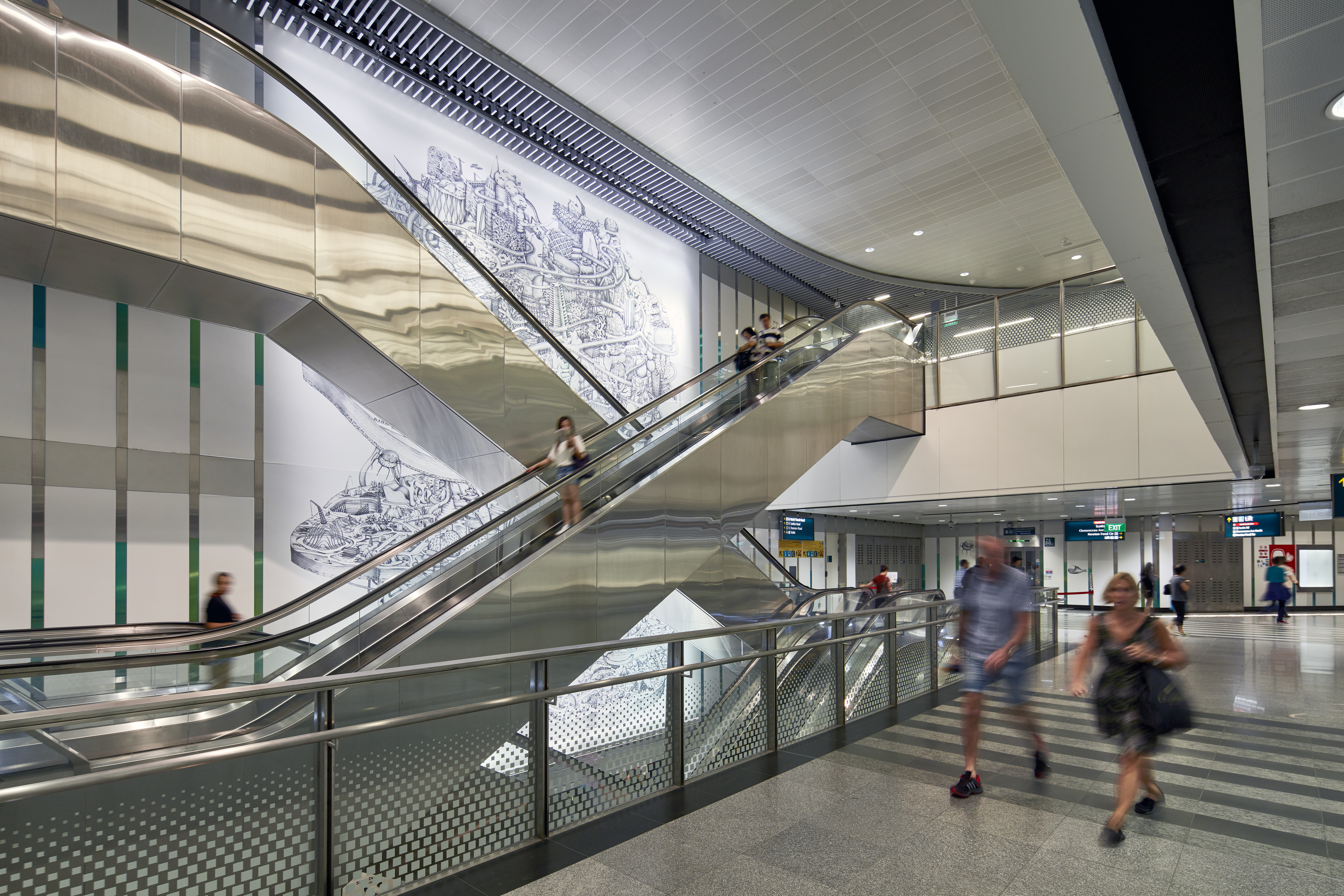
At Dhoby Ghaut Interchange Station, a major interchange connecting three major transit lines in the heart of Singapore – the North South (NSL), North East (NEL) and Circle Line (CCL), the designers were challenged to ensure seamless and pleasant transfers uninterrupted by the throngs of commuters flowing through the interchange. At this multi-level interchange with six platforms across five basements, the design strategy of a clear, direct and open atrium concept with a hierachy of high ceiling volumes effectively enhances visual connectivity, ensuring clear lines of sight, facilitating effective and efficient transfers as well as reducing blind spots as a security and surveillance measure.
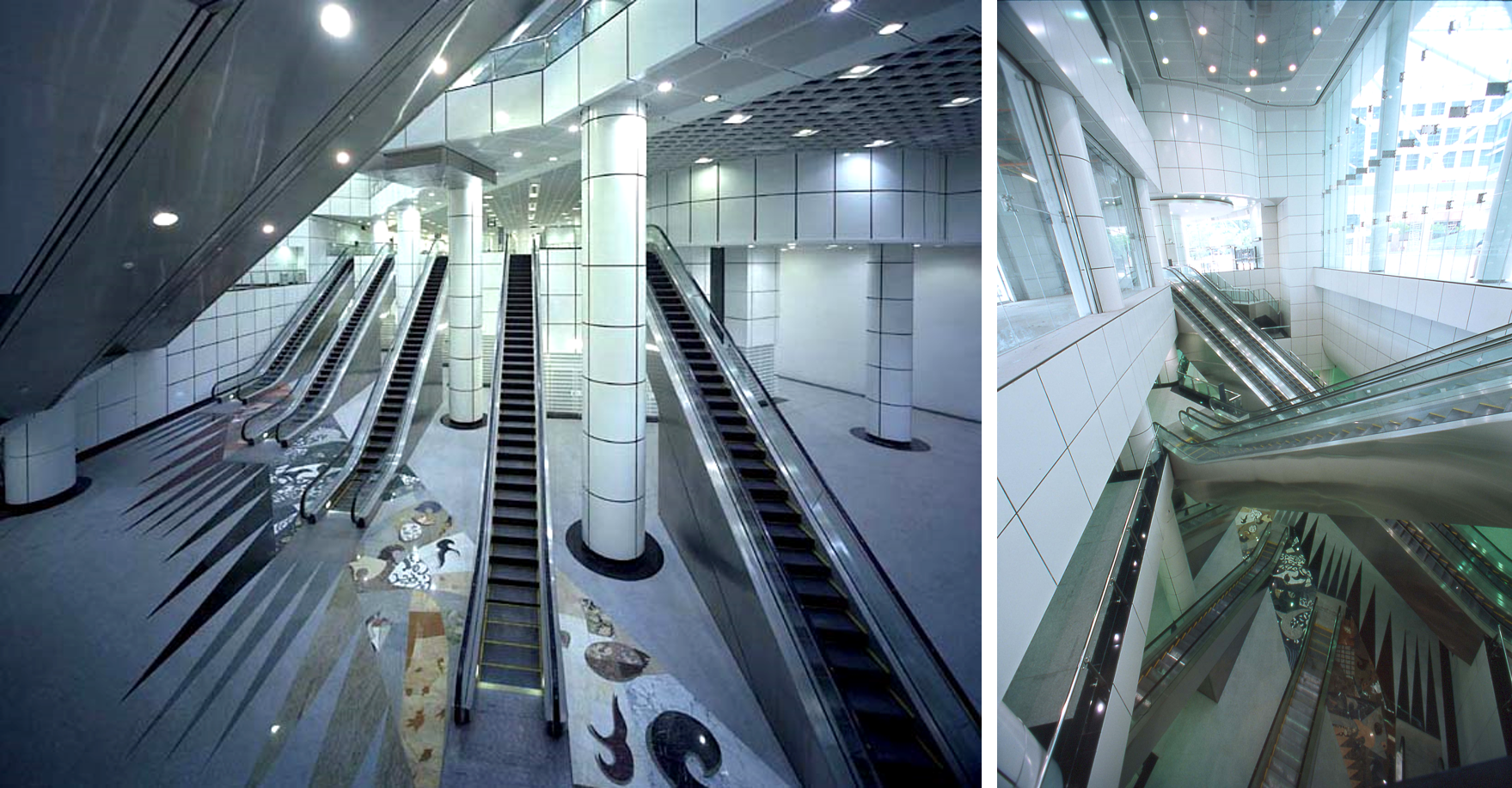
Striking an optimal balance
Seamless connectivity would suggest planning for the most direct route connecting commuters from one transit point to another, enabling effective transfers. In practice, it is an optimal balance between connectivity, constraints and care for the surroundings.
A case in point is the Thomson-East Coast Line (TEL) Orchard Interchange Station, completed in 2022 that links into the North-South Line (NSL) Orchard Station through what is currently the deepest paid-to-paid link in Singapore at 26 metres below ground level. It is located underground within a URA future sale site and will eventually be incorporated as part of and be connected to the future development to be built there.
The TEL station has a total of five entrances, spread out along Orchard Boulevard and Paterson Road, surrounded by greenery. With detailed consideration for proximity to existing buildings, underground services and the need to conserve the surrounding greenery, the station weaves through existing context to connect with and serve commuters coming in from various directions, striking the balance between efficient connectivity and minimal disruption to the surrounding context.
On the other hand, the NSL Orchard Station serving the Orchard Road premium shopping area is integrated and enveloped by the iconic ION Orchard. To minimise disturbance to the buzzling shopping district and the existing station, a paid connection is mined under the existing station platform, thus allowing the shortest and most direct route linking the platforms of NSL and TEL stations. Two sets of bypass escalators spanning across the station between the platform link and concourse levels, traversing 16-metre vertical height are provided within the paid areas allowing commuters to avoid the crowded platforms and to get from interchange linkway to the concourse level directly.
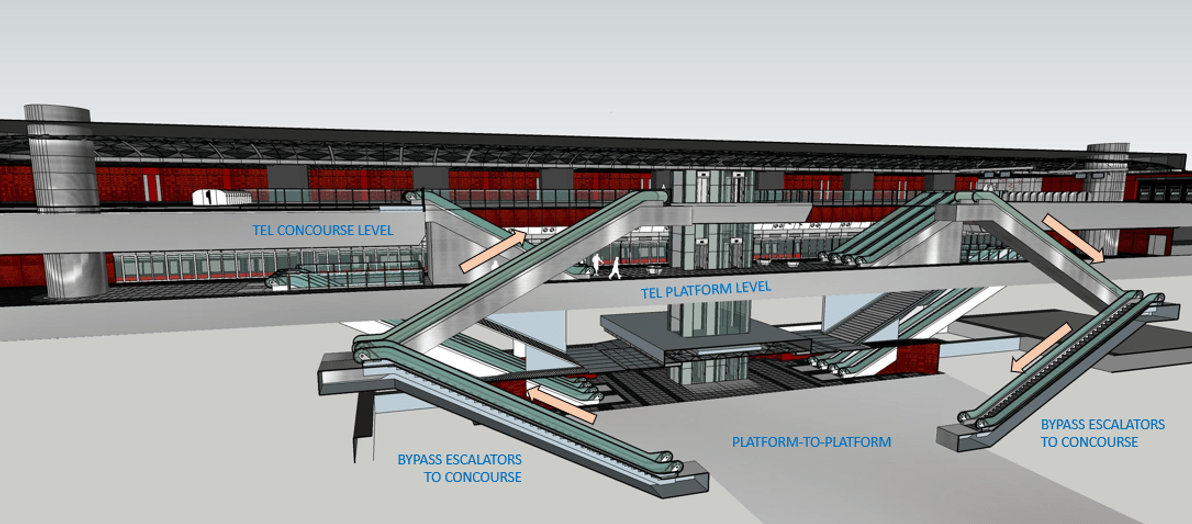
Effective intermodal transfers involve the layering of other transit networks for a successful door-to-door connection. Major transit connections are part of a larger ecosystem of transit networks and mobility options – light rail, buses, taxis, private vehicles, bicycles and kick-scooters.
Meaningful connective networks: Inclusive entrances
Station entrances are important point of connections, one of the many doors in the ‘door-to-door’ travel that could either make or break the journey. While some station entrances are integrated within buildings, others are designed as standalone pavilions respecting the surrounding site terrain and landscape. Although Newton Interchange Station’s entrance is a temporary one to be integrated with a future development, it is conceived as a highly visible urban marker introducing nature into an urban landscape of walls and cars at the Newton Circus Junction, serving as a link between the community and the various transit modes.
A successful transit space must be designed for accessibilty and inclusivity, catering to all passengers, including those with disabilities, and providing a choice of transfer options to commuters. This concept of designing for all incorporates universal design principles holistically, addressing commuters’ comfort right up to the first and last mile. This includes the provision of ramps, elevators, tactile signages for navigation, seating at waiting areas for rest, and landscape to make the journey a pleasant one.
Inclusive design features are integrated in the Orchard and Newton Interchange Station, from where the user arrives at the bus and taxi stand right to the escalator and lift leading to the station’s concourse. A gentle ramp runs from the sheltered arrival points to the station entrance winding through a lushly landscaped garden. Instead of the conventional pairing of a flight of steps with a functional ramp for barrier-free access, this integrative gesture brings people with different abilities together. Those with disabilties need not be segregated from the crowd while manouevring across transit modes.
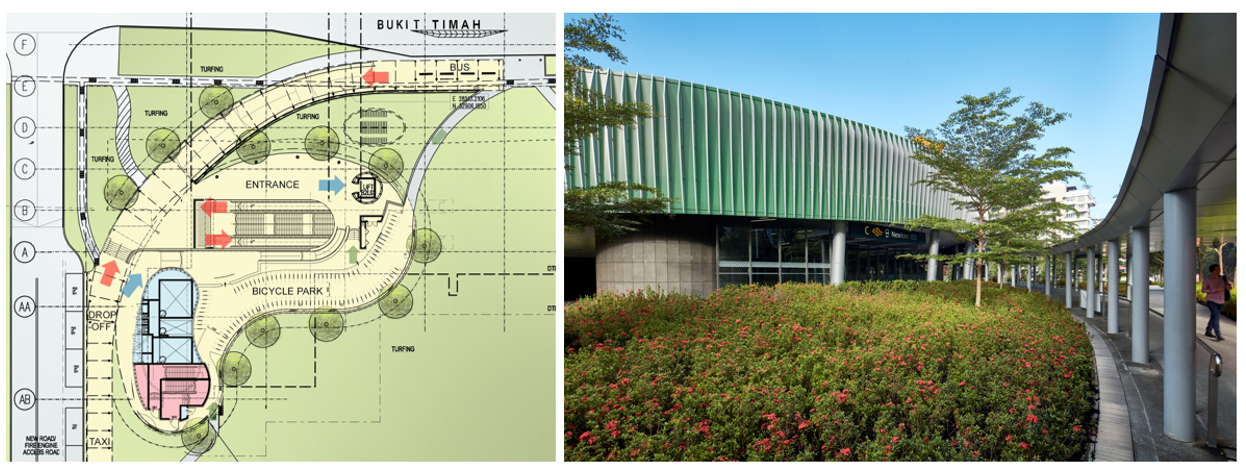
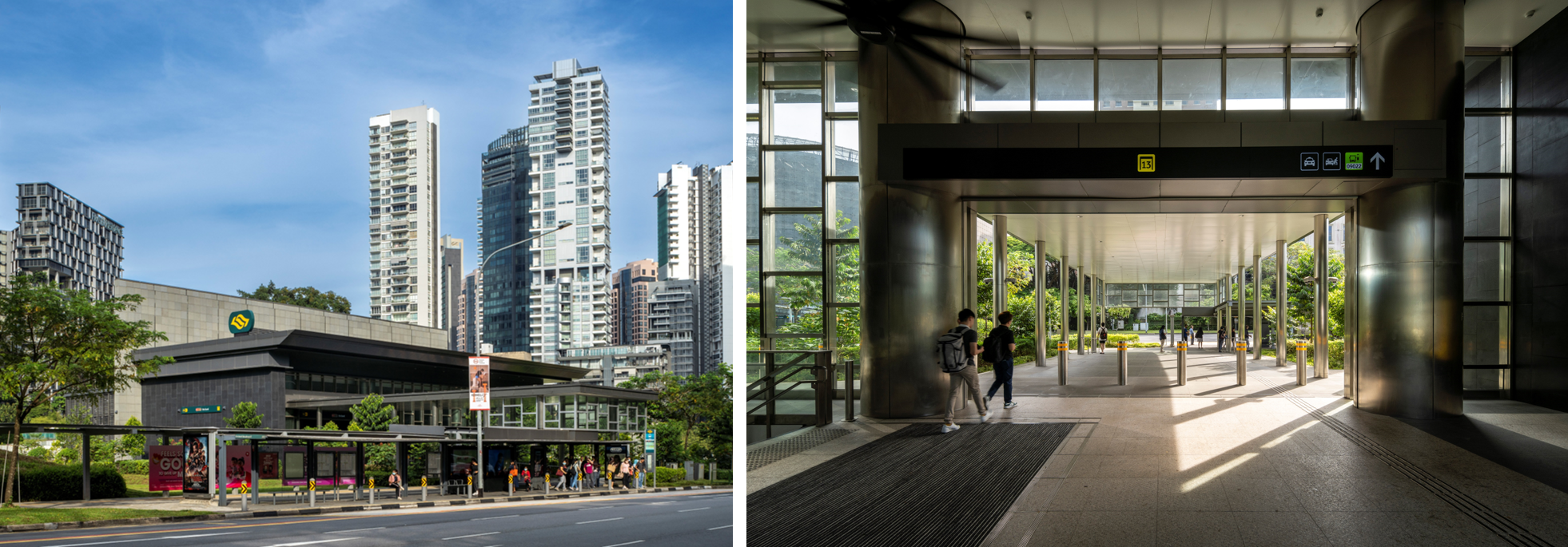
First and last mile: People-centric connectivity
The Land Transport Authority’s 2040 target is for 9 in 10 peak hour commutes to the city to be under 45 minutes and trips to the nearest neighbourhood centre in under 20 minutes3. Provision of cycling facilities and infrastructure such as cycling paths, bicycle parking spaces and pedestrian walkways are critical in building a car-lite society. Research has shown that designing for the first and last mile, empowers commuters and creates healthy and happy communities through such sustainable forms of transportation. As reported in the City of Vancouver’s ‘Active City: Designing for Health’, cities that create opportunities for physical activity are more likely to have happier citizens4.
The last mile and beyond
The future of seamless mobility will continue to be shaped by developing trends and technology such as autonomous, electric and sustainable intermodal transportation in the development of new urban and transport models that are constantly evolving. The Jurong Innovation District of Singapore, provides a testbed for innovations – an elevated sky corridor spanning 11km connecting people across the precinct in a loop and the island’s rail network, enabling pedestrians, cyclists and driverless vehicles to effortlessly make the first and last mile commute.
With so many spending hours in their daily commute, the journey is as important as the destination. Public transit has become a mobile form of public space in today’s cities; one that empowers and connects communities. With this in mind, it is imperative that we design for the entire passenger experience, with opportunities for people to connect and move around the city with ease, comfort and also delight.
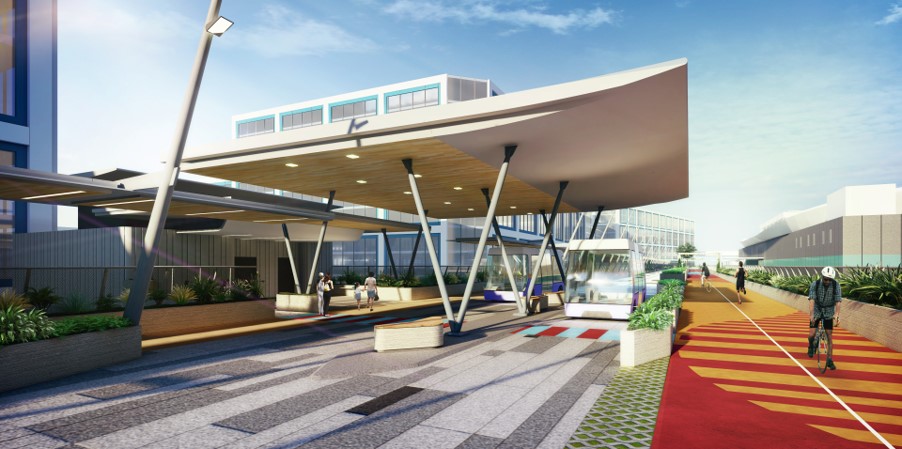
References
1 Nordahl, D. (2013), ‘My Kind of Transit: Rethinking Public Transportation’
2 Sharp, I. (2005), ‘The Journey: Singapore’s land transport story’
3 ’Active City Designing for Health’, https://www.toronto.ca/legdocs/mmis/2014/hl/bgrd/backgroundfile-69334.pdf
4 ‘Land Transport Master Plan 2040’, https://www.lta.gov.sg/content/ltagov/en/who_we_are/our_work/land_transport_master_plan_2040.html


